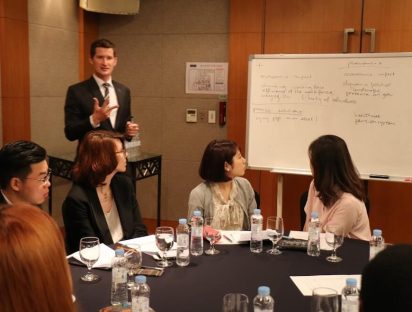In the beginning of September, I was delighted to visit the prestigious Lund University at their beautiful Campus in Helsingborg city, Sweden.
Fashion in China.
After a lecture and seminar on intercultural communication with a wonderful group of excellent students from all parts of the world, I had the opportunity to present my current research on fashion in China to the colleagues from the Department of Strategic Communication.

Despite economic growth slowing down, China is still rising. Notably the fashion and luxury goods industry benefits from ever higher incomes of Chinese consumers. This together with my personal experience of having lived in China for several years, have triggered an interest in fashion in China.
« More important the role of Confucius’ philosophy in a given culture is, more infantile the female fashion style becomes »
More precisely, I always wondered how we can explain the high level of cuteness and seeming lack of rules of the contemporary mainland Chinese female fashion. When it comes to cuteness, I firstly hypothesized that Chinese contemporary women’s fashion is a reaction to the Maoist period when women who would show their femininity were frowned upon.
In fact, more important the role of Confucius’ philosophy in a given culture is, more infantile the female fashion style becomes. Japanese or Taiwanese fashion tends to be “cuter” than mainland Chinese fashion.
“In China, anything goes”
As far as the seeming lack of rules is concerned, I observed during my time in China that the only rule for Chinese fashion seems to be “anything goes”. Thus, you see women wearing all typed of materials, patterns and colors combined.
Here, I hypothesize that the Chinese economic development has led to a more individualistic society which is reflected in contemporary women’s fashion in the sense that there is a seeming lack of rules. In turn, the more economically developed a country is, the more defined fashion and style rules become.
Of course, I see mainland Chinese fashion very much through the glasses of a Western foreigner – and the Lund colleagues mercilessly pointed to the bias that was still too present in my research project for which I am more than thankful. Ideas for operationalization are now much more concrete so the trip to Campus Helsingborg was more than worthwhile!
Frauke Austermann.





